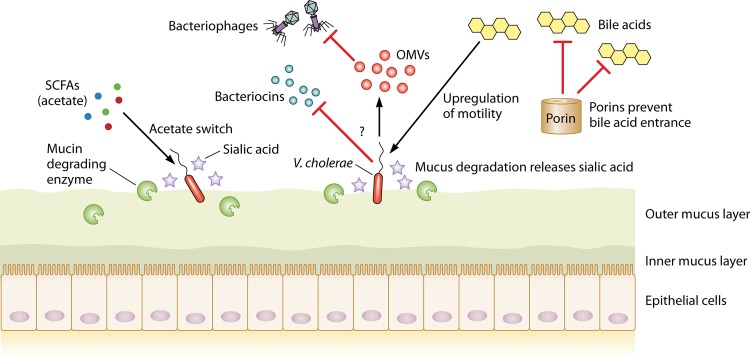FIG 2.
V. cholerae uses a wide array of mechanisms to overcome CR. First, it employs its acetate switch to use acetate to upregulate its own virulence. Nothing about potential bacteriocin resistance is presently known, and this subject remains to be studied. To protect itself from bacteriophages, V. cholerae produces outer membrane vesicles (OMVs) that act as a decoy binding site for the attacking phages (see Bacterial Defense Mechanisms against Bacteriophages). Regulation of outer membrane porins allows them to prevent entry of bile acids when they are encountered. By employing specific mucin-degrading enzymes, V. cholerae releases sialic acid and subsequently metabolizes it.

